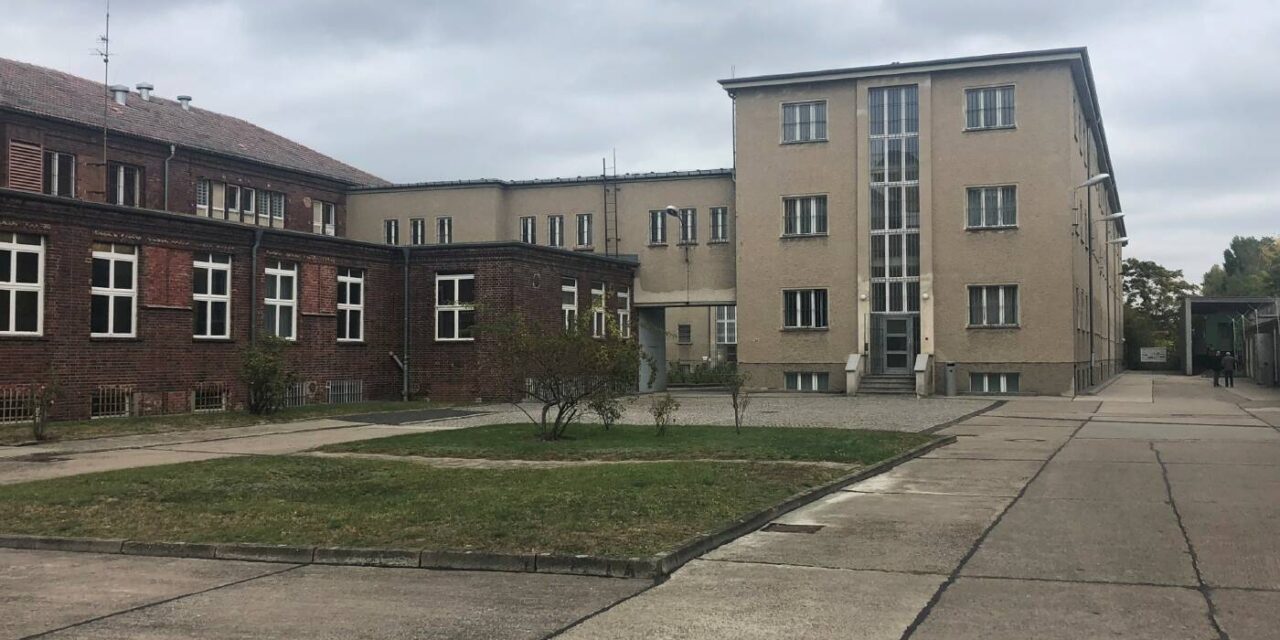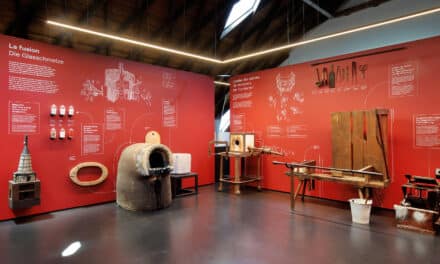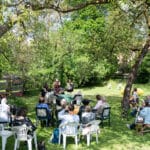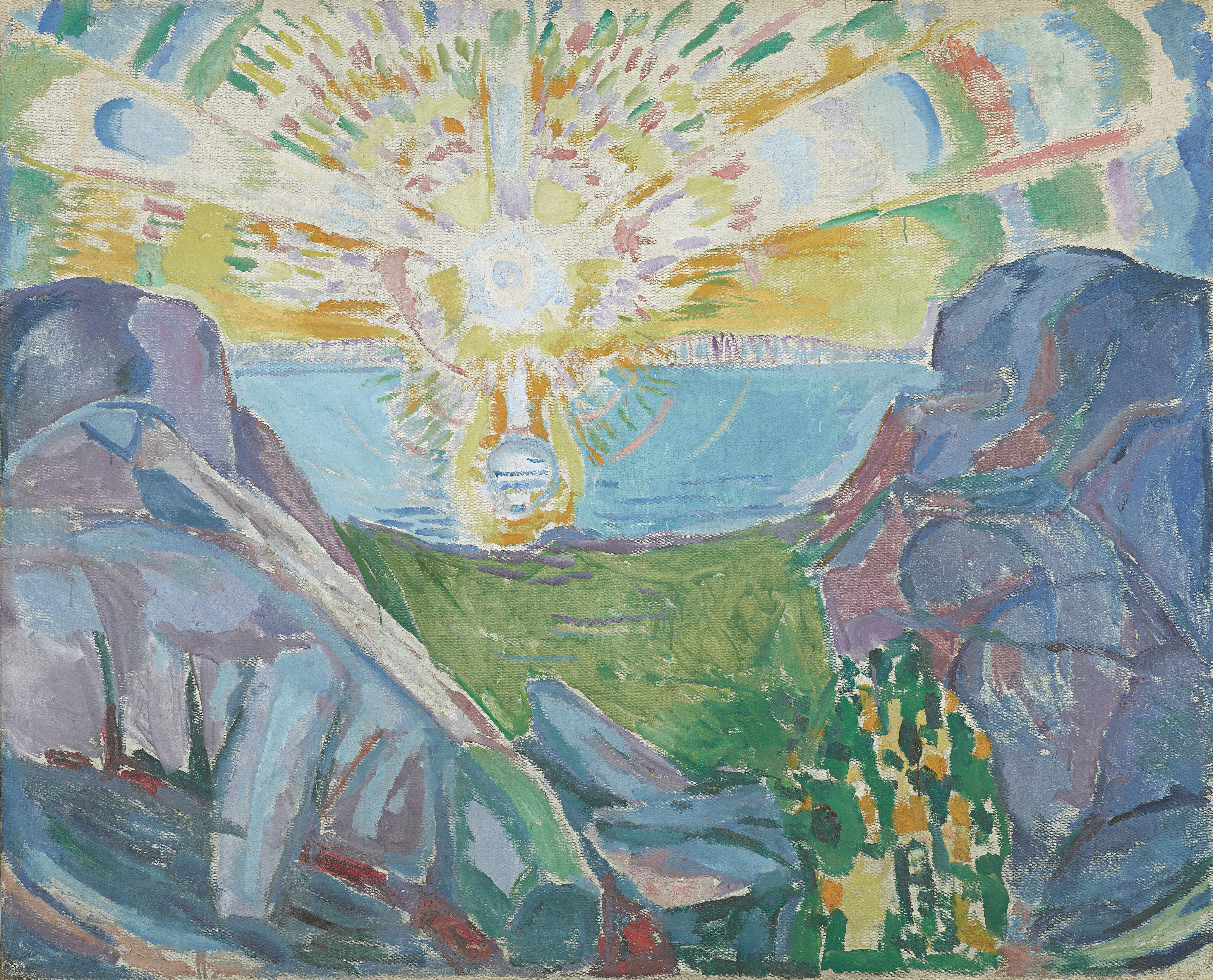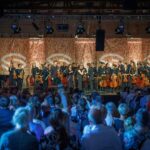The Berlin-Hohenschönhausen Memorial is located in a place that is linked to the 44-year history of political persecution in the Soviet Occupation Zone (SBZ) and the GDR like no other in Germany. Two permanent exhibitions and changing special exhibitions illustrate a dark chapter of Berlin's post-war period.
The Berlin-Hohenschönhausen Memorial Foundation was established in 2000. Its mission is to research the history of the Berlin-Hohenschönhausen prison site and the system of political justice in the German Democratic Republic and to provide information through exhibitions, events and publications in order to encourage people to come to terms with the forms and consequences of political persecution under the communist dictatorship.
A Soviet special camp was set up on the site of a former canteen kitchen in north-east Berlin after the end of the Second World War. After the camp was closed in November 1946, the central Soviet remand prison for East Germany was established in the basement of the building. In April 1951, the Ministry for State Security (MfS) took over the prison, extended it with a new building in November 1960 and used it as a central remand prison until January 1990. Thousands of politically persecuted people were imprisoned here, including almost all well-known GDR opposition activists.
Show less
The central service units responsible for criminal investigations and prisons at the MfS were also located around the prison in Berlin's Genslerstraße: Main Department IX and Department XIV, which reported directly to the Minister for State Security Erich Mielke. They controlled all investigation departments and pre-trial detention centers in the 15 GDR districts and directed their work. The location formed a kind of central office for communist repression in East Germany.
The pre-trial detention center was located in a restricted military district that was hermetically sealed off from the outside world. The area, which was not marked on any East Berlin city map, was also home to other MfS service units: the Operative Technical Sector (OTS), which was responsible for the construction of eavesdropping equipment, the Main Department IX/11 with its secret Nazi archive and part of the espionage apparatus of Main Administration A (HVA). Until 1974, the "X" labor camp, where convicted prisoners had to perform forced labor for the State Security Service, was located directly next to the prison.
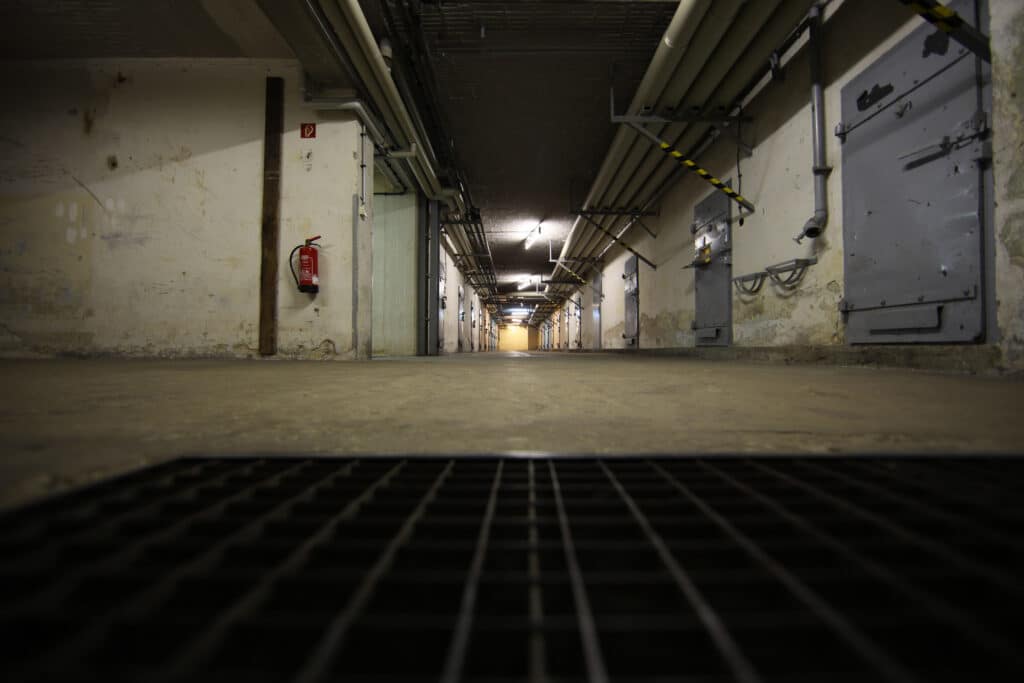
Cell corridor in the basement prison ("submarine") © Gedenkstätte Berlin-Hohenschönhausen/Gvoon
Permanent exhibitions:
Imprisoned in Hohenschönhausen Testimonies of political persecution 1945 to 1989
Over 300 photos and 500 artifacts vividly depict the history of the Stasi prison, and there are also over 100 media stations. The exhibition focuses on the experiences of the victims during their imprisonment in Hohenschönhausen. For the first time, the offices of the former prison administration are also on display. A separate exhibition area provides information about the working and living environment of the prison staff.
In addition, the premises of the former Hohenschönhausen prison can be visited as part of a two-hour guided tour, which is usually led by former prisoners.
You can purchase the exhibition catalog in the memorial's bookstore.
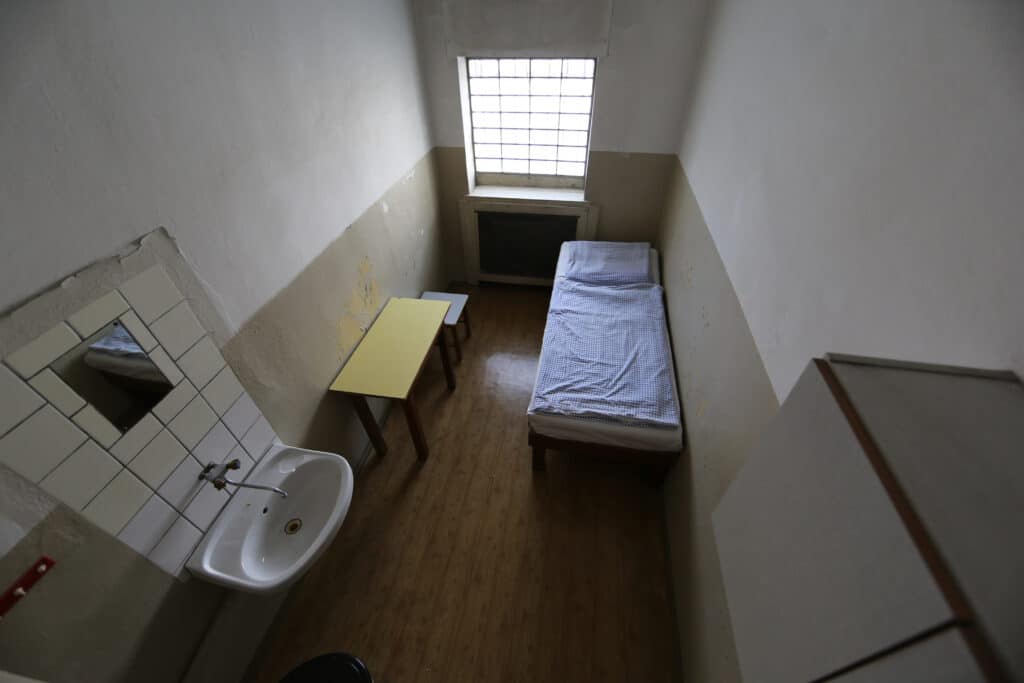
Cell in the new prison building © Gedenkstätte Berlin-Hohenschönhausen/Gvoon
The work detachments of the prisoners in Hohenschönhausen
The remand prison of the Ministry of State Security (MfS) in Hohenschönhausen needed manpower to keep the prison running and to care for the political prisoners. To do this, the Stasi used prisoners and formed work squads made up of men and women.
The permanent exhibition focuses on the living and working conditions of the women deployed in the commandos. They were used in the kitchen, as cleaners and for sewing, washing and ironing. Under the control of the MfS, life in the commando was characterized by hard work and mutual spying - but also by solidarity and friendship.
The exhibition is located in a preserved, approximately 500 square meter kitchen and living wing of the prison. Prisoners from the "Neue Küche" women's detachment worked here until 1989. The workrooms and accommodation can be explored with the help of tablets. An augmented reality app makes reports from contemporary witnesses, MfS documents and recorded excerpts from informer reports to the Stasi virtually accessible.
Together with the digital exhibition content, the original furnishings and numerous pieces of equipment and kitchen utensils provide an insight into the prisoners' everyday life and work. Volumetric recordings of contemporary witnesses in 3D also enable virtual encounters with former prisoners.
Audio guides in German, English, French, Italian, Spanish, Danish and Russian are available free of charge from the visitor service.
Admission to the permanent exhibitions is free

